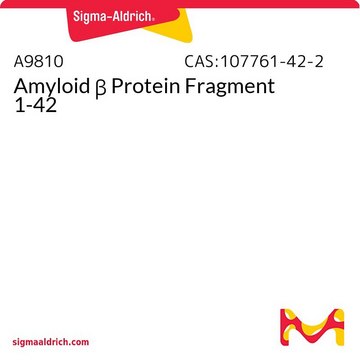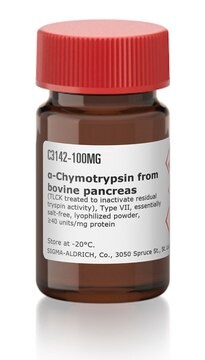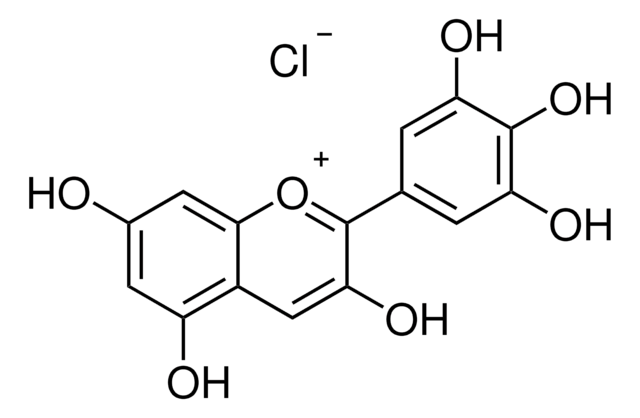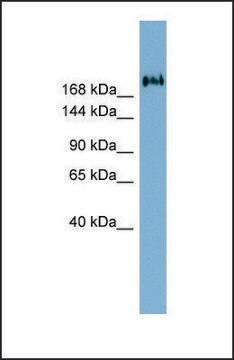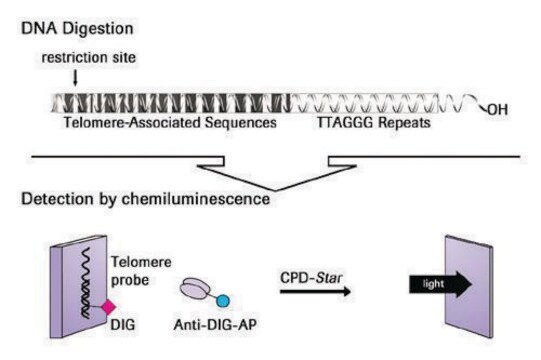G5544
Anti-GABAA Receptor (α6 subunit) antibody produced in rabbit
affinity isolated antibody, lyophilized powder
Synonym(s):
Anti-γ-Aminobutyric Acid Type A Receptor (α6 subunit), Anti-GABRA6
Sign Into View Organizational & Contract Pricing
All Photos(3)
About This Item
Recommended Products
biological source
rabbit
Quality Level
conjugate
unconjugated
antibody form
affinity isolated antibody
antibody product type
primary antibodies
clone
polyclonal
form
lyophilized powder
species reactivity
rat
technique(s)
western blot: 1:200 using rat brain membranes
UniProt accession no.
storage temp.
−20°C
target post-translational modification
unmodified
Gene Information
human ... GABRA6(2559)
mouse ... Gabra6(14399)
rat ... Gabra6(29708)
General description
GABAA and GABAB receptors differ with regard to their ionic characteristics and pharmacological properties. The GABAA receptor is an ionotropic receptor that forms the GABA gated chloride channel and consists of several heterogeneous subunits with membrane recognition sites for benzodiazapenes.
Immunogen
peptide corresponding to amino acids 20-37 of rat GABA(A) α6. This sequence is identical in mouse and shares 17 of 19 residues in human.
Application
Anti-GABAA Receptor (α 6 subunit) antibody produced in rabbit is suitable for the immunofluorescent detection of GABAA receptor α 6 in cerebella of mice. It is suitable for immunoblotting at a working dilution of 1:200 using rat brain membranes.
Biochem/physiol Actions
The inhibitory neurotransmitter GABA signals through two distinct types of pre- and postsynaptic receptors, GABAA and GABAB. Both GABA receptors can regulate depression of synaptic transmission and be involved in the inhibition controlling neuronal excitability. Mutations in the gene may be responsible for the pathogenesis of childhood absence epilepsy (CAE). Polymorphism in this gene is also related to attenuation in hormonal and blood pressure responses under certain psychological stress.
Target description
Anti-GABA(A) Receptor (α6 subunit) specifically recognizes the GABA(A) receptor α6 subunit protein and may be used for the detection of the GABA(A) receptor α6 subunit protein. The inhibitory neurotransmitter GABA (α-aminobutyricacid
Physical form
Lyophilized from phosphate buffered saline, pH 7.4, containing 1% bovine serum albumin, and 0.05% sodium azide.
Disclaimer
Unless otherwise stated in our catalog or other company documentation accompanying the product(s), our products are intended for research use only and are not to be used for any other purpose, which includes but is not limited to, unauthorized commercial uses, in vitro diagnostic uses, ex vivo or in vivo therapeutic uses or any type of consumption or application to humans or animals.
Not finding the right product?
Try our Product Selector Tool.
Storage Class Code
11 - Combustible Solids
WGK
WGK 3
Flash Point(F)
Not applicable
Flash Point(C)
Not applicable
Choose from one of the most recent versions:
Already Own This Product?
Find documentation for the products that you have recently purchased in the Document Library.
Joanne Falck et al.
The Journal of neuroscience : the official journal of the Society for Neuroscience, 40(14), 2943-2959 (2020-03-04)
Piccolo, a presynaptic active zone protein, is best known for its role in the regulated assembly and function of vertebrate synapses. Genetic studies suggest a further link to several psychiatric disorders as well as Pontocerebellar Hypoplasia type 3 (PCH3). We
Ciria C Hernandez et al.
The Journal of physiology, 589(Pt 23), 5857-5878 (2011-09-21)
A GABA(A) receptor α6 subunit mutation, R46W, was identified as a susceptibility gene that may contribute to the pathogenesis of childhood absence epilepsy (CAE), but the molecular basis for alteration of GABA(A) receptor function is unclear. The R46W mutation is
X Li et al.
Neuroscience, 152(2), 391-406 (2008-02-26)
The cerebellar cortex of protein O-mannose UDP-N-acetylglucosaminyl transferase 1 (POMGnT1) knockout mice contains discrete clusters of granule neurons that fail to migrate from the external germinal layer (EGL) to the internal granule cell layer (IGL). To test the hypothesis that
Fabian M P Kaiser et al.
The Journal of experimental medicine, 219(9) (2022-08-11)
The genetic causes of primary antibody deficiencies and autism spectrum disorder (ASD) are largely unknown. Here, we report a patient with hypogammaglobulinemia and ASD who carries biallelic mutations in the transcription factor PAX5. A patient-specific Pax5 mutant mouse revealed an
M Uhart et al.
Molecular psychiatry, 9(11), 998-1006 (2004-06-16)
The glucocorticoid component of the stress response has been the subject of intense scientific scrutiny because of the wide ranging pathological consequences resulting from excess glucocorticoid exposure, including mood and anxiety disorders, and cognitive impairment. Exposure to stress activates the
Our team of scientists has experience in all areas of research including Life Science, Material Science, Chemical Synthesis, Chromatography, Analytical and many others.
Contact Technical Service

